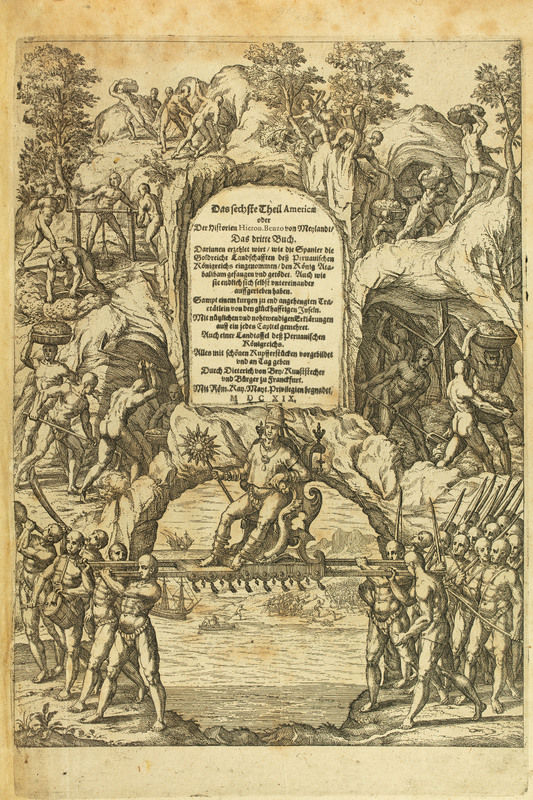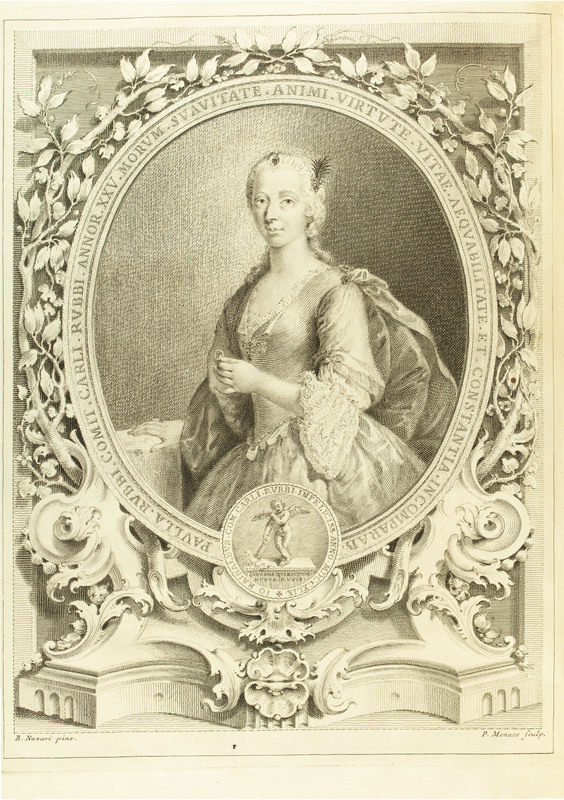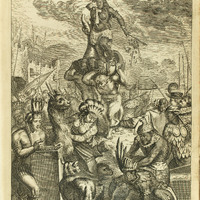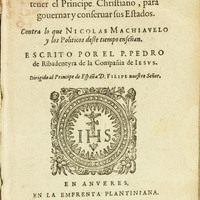Gender and Risk
The threat posed by newly discovered lands and populations, like the threat posed by an unruly subject, has often been represented through the image of a woman. As both exotic personifications of new fertile continents, and adventurous heroines of their own private lives, women can embody the risk of an unknown other. Hence, their representations remain ambivalent, in a precarious balance between desire and fear, between a risk worth taking and a deadly siren.
Works Included
Arnoldus Montanus (1625-1683), a Dutch minister and Headmaster of Latin, devoted
his prolific writing production to the geography and history of far away lands in the
Americas and the Pacific. In The New America and Unknown World: or Description of America and the Southland, Montanus describes some of the most important voyages to the Americas and Australia, depicting the risks and dangers of such transoceanic
encounters. He also focuses on the natural history of these countries and the religion
and manners of their inhabitants. The book was engraved by the Amsterdam bookseller
and engraver Jacob van Meurs; all illustrations pertain to the Americas.
The famous Flemish goldsmith and engraver Theodor de Bry (1528-1598) was also a
recognized bookseller, and editor who, along with his sons Johann Theodore and
Johann Israel, engaged in the profitable publication and illustrations of manuscripts
pertaining to the conquest and colonization of the Americas and the East Indies. Das
sechste Theil Americae is a compilation of what he called the great voyages to the
Americas, including the voyage of Jacques le Moyne to Florida, Thomas Hariot's
expedition to Virginia, Girolamo Benzoni's travels to the West Indies, Central and South
America, and the accounts of Jean de Lery, Antonio de Herrera, Ulrich Schmidl, Joseph
Acosta, and Sir Francis Drake. Although De Bry never visited America, he vividly
depicted and recreated the violence of risky encounters between Europeans and
indigenous people in the Americas through the use of copper plate engravings.
Recently rediscovered, this is the second extant copy of a book that risked complete
annihilation. The biography of the spirited Countess Paolina Rubbi, written by her
husband, Count Gianrinaldo Carli (1720-1795), had been doomed to destruction by its
own author. The Count, who narrated his wife's life shortly after her death at the age of
twenty-five, judged his own work too daring and asked the editor to burn all existing
copies. Until January 2010, there was only one known copy preserved in Lucca, Italy.
Countess Paolina's risky story is now known to be at the University of Illinois.



